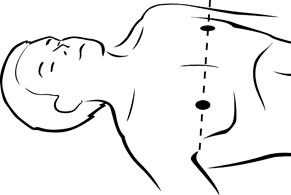CPR-A teaches how to do adult CPR and choking procedures for adults and includes the importance of early defibrillation and how to use an AED.
Prerequisite: None.
Instruction & certification: Current Emergency First Aid Instructors or First Aid Instructors teach and certify candidates. The Lifesaving Society deems its certifications to be "current" for 24 months from the certification date.
Candidate recognition: Certification card for all CPR levels. (See Non-vocational awards below.)
Required reference material: Canadian First Aid Manual or Canadian Lifesaving Manual. (Note that some affiliates provide materials to candidates, and some require candidates to purchase materials on their own. Double check before you purchase.)
Recertification: CPR-A, -B and -C recertification course (4-5 hr.)
at-a-glance
- Demonstrate one-rescuer adult cardiopulmonary resuscitation on a manikin, and how to use an AED.
- Simulate the treatment of:
- a conscious adult with an obstructed airway
- complications: a pregnant woman and person who is obese
:::

Non-vocational awards
Include Swim Program, Canadian Swim Patrol (Rookie, Ranger, Star), Basic First Aid, and CPR A, B and C.
Affiliates issue all non-vocational awards directly to candidates. Affiliates order the awards from the Society ahead of time for presentation to successful candidates at the evaluation.
The Lifesaving Society does not require a copy of the test sheets for these levels.
Only Swim for Life® licensees may offer swim program awards.